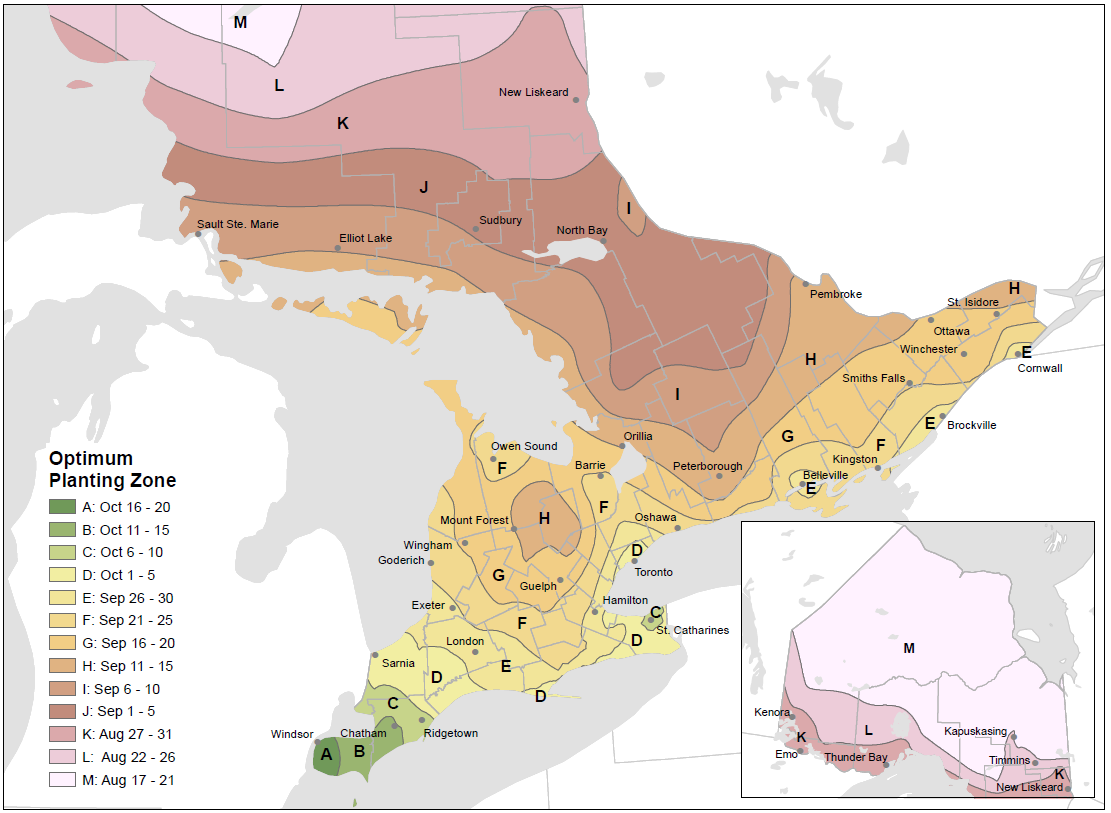Photo above: Potato leafhopper damage (called “hopper burn”) is frequently mistaken for insufficient water.
To maximize the forage yield of fall cereals next spring, research from New York state suggests planting fall rye or winter triticale 10-14 days before the optimal winter wheat planting date (Figure 1).

September 1st is the deadline to report summer-seeded New Forage Seeding acres to Agricorp. Premiums are due September 15th.
AAFC’s Agroclimate Impact Reporter is interested in how weather impacts farms throughout the growing season (i.e. what’s really happening on the ground). This ag-sector citizen science effort feeds into AgriRecovery and other programs. The monthly survey takes ~5 minutes to complete. To join the reporter network, visit http://www.agr.gc.ca/eng/agriculture-and-climate/drought-watch/agroclimate-impact-reporter/?id=1463575416544
Southwest
- Rainfall in July was average in Grey, Bruce, Dufferin, north Wellington, north Huron, Lambton, Chatham-Kent, and Essex. The rest of the region received below-average precipitation. Regrowth in pastures and hay fields followed precipitation patterns.
- The fall rest period for alfalfa starts around August 25 for areas of Grey, Dufferin, Bruce, Huron and Wellington counties, and later in other parts of the region. Cutting during the six weeks after this date depletes root reserves and increases the risk of winterkill.
- Potato leafhopper is the most economically significant alfalfa pest in Ontario. Pressure is high this year and is frequently mistaken for insufficient water. Fields should be cut to stimulate regrowth and scouted again 5-7 days later to determine if insecticide is warranted.
Central and East
- Rainfall in most of the region was below average, although Prescott & Russell, Stormont, Dundas & Glengarry, Muskoka, and parts of Frontenac and Durham received average precipitation for July. Regrowth in pastures and hay fields followed precipitation patterns.
- The fall rest period for alfalfa starts around August 20 for areas of Renfrew, Haliburton and Muskoka and later in other parts of the region. Cutting during the six weeks after this date depletes root reserves and increases the risk of winterkill.
- Potato leafhopper is the most economically significant alfalfa pest in Ontario. Pressure is high this year and is frequently mistaken for insufficient water. Fields should be cut to stimulate regrowth and scouted again 5-7 days later to determine if insecticide is warranted.
Northeast
- Rainfall was average in Timiskaming, Nipissing, and Parry Sound Districts; below average in Cochrane; and above average in Sudbury, Manitoulin, and Algoma for July.
- The fall rest period for alfalfa starts around August 10 in Cochrane District, and later in areas further south. Cutting during the six weeks after this date depletes root reserves and increases the risk of winter kill.
Northwest
- Rainfall in July was average in Thunder Bay District, and below average in Rainy River and much of Kenora District.
- The fall rest period for alfalfa starts around August 10 in Kenora District, and later in areas further south. Cutting during the six weeks after this date depletes root reserves and increases the risk of winterkill.


